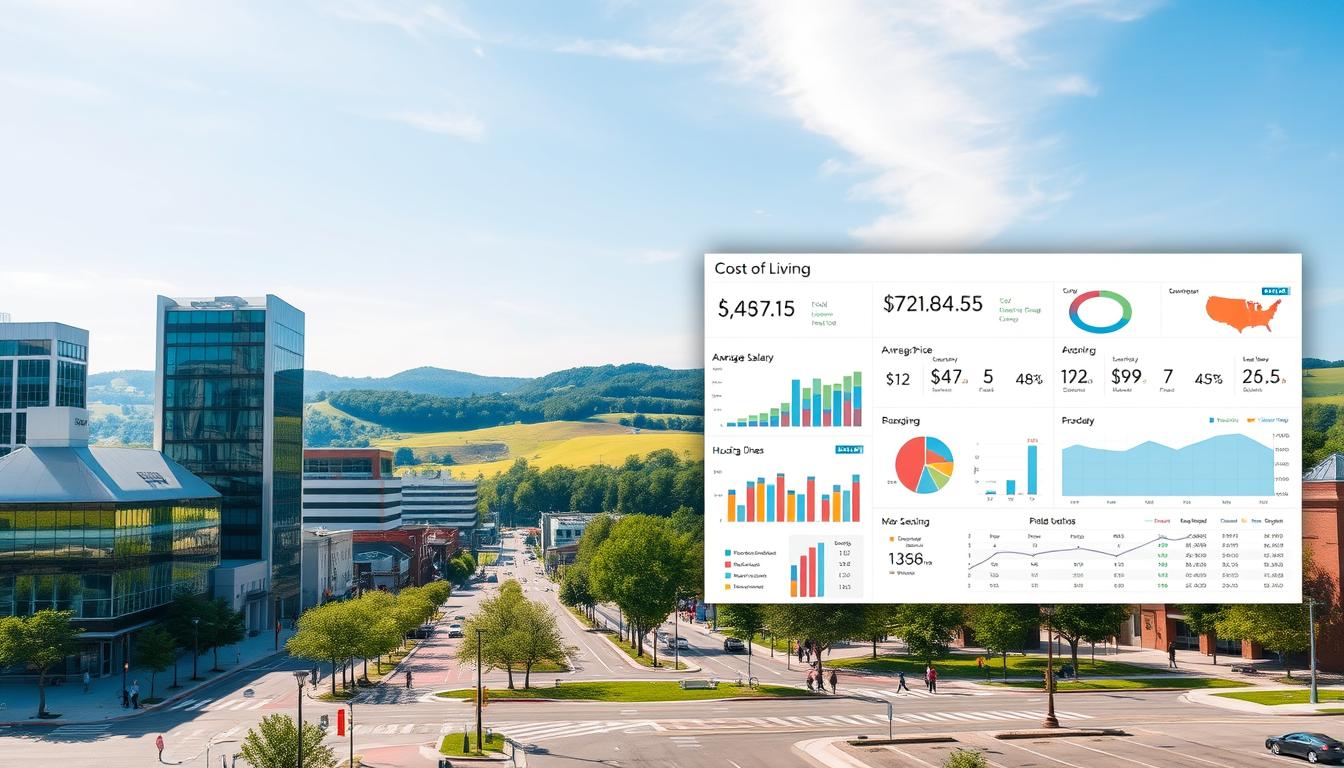Top fashion stylists now earn over $500 per hour dressing CEOs and celebrities. This surge reflects a booming $8.9 billion industry growing faster than most tech sectors. By 2025, luxury brands and time-strapped clients will need 23% more style experts to navigate evolving retail landscapes.
New opportunities emerge as shoppers prioritize convenience and curated experiences. Busy professionals pay premium rates for wardrobe solutions that save 10+ hours monthly. Luxury retailers increasingly partner with independent stylists to serve high-net-worth clients.
RoboApply streamlines breaking into this competitive field. Our AI tools analyze 1,200+ job descriptions to highlight in-demand skills like trend forecasting and client relationship management. Automated templates help craft resumes that outperform 83% of applicant tracking systems.
Key Takeaways
- Industry projected to grow 7% yearly through 2025, creating 12,000+ new roles
- Skilled professionals earn $50-$200 hourly, with VIP services exceeding $500
- Specialized niches like sustainable fashion drive higher client retention
- AI tools optimize job searches, application tracking, and skill development
- Networking strategies boost visibility with luxury brands and private clients
This guide details actionable steps to build your reputation, master digital tools, and secure premium opportunities. You’ll learn to position yourself as clients’ first choice in a crowded market.
Introduction to Personal Shopper Careers
Style experts now shape wardrobes for executives, influencers, and everyday professionals seeking confidence through clothing. This field blends creativity with strategy, requiring both aesthetic vision and organizational skills to meet rising demand.
What Does a Personal Shopper Do?
You help individuals align their appearance with personal or professional goals. This involves analyzing body shapes, suggesting color palettes, and sourcing garments that fit budgets. Many specialize in areas like sustainable fashion or event-specific styling for weddings or corporate events.
Effective communication proves critical. You’ll interpret unspoken preferences while educating clients about current fashion trends. For example, a CEO might need boardroom outfits projecting authority, while a recent graduate seeks interview-ready looks.
Why 2025 Is a Pivotal Year
The styling market expands as 43% of U.S. consumers prioritize personalized shopping experiences. Three factors drive growth:
- Time-crunched professionals outsourcing wardrobe decisions
- Luxury brands hiring independent experts for VIP clients
- Emerging niches like gender-neutral styling and adaptive clothing
Specialized expertise in areas like plus-size fashion can increase earnings by 35%. Tools like business management platforms help streamline operations for those starting independent practices.
Understanding the Role of Personal Shoppers
Successful style consultants transform wardrobes by balancing creativity with precision. Your work bridges fashion trends and individual lifestyles, requiring deep understanding of both aesthetic principles and practical logistics.

Core Duties That Drive Client Satisfaction
Building trust begins with detailed consultations. You’ll analyze body types, color compatibility, and professional requirements to create tailored solutions. For example, a client preparing for investor meetings might need suits that convey authority while accommodating frequent travel.
Daily tasks demand staying ahead of industry shifts. This means reviewing designer collections weekly and testing new styling apps. One stylist increased repeat bookings by 40% after introducing clients to wrinkle-resistant fabrics through hands-on fabric swatch demonstrations.
Your merchandise knowledge becomes clients’ secret weapon. Recognizing sizing inconsistencies between brands helps avoid returns, while understanding fabric care extends garment longevity. A recent survey shows 68% of shoppers prioritize experts who explain material durability during consultations.
Organization separates good stylists from great ones. Use digital tools to track purchase histories and store preference details like “avoids polyester” or “prefers muted tones.” This systematic approach lets you quickly source items during last-minute requests, such as emergency gala outfits.
Post-purchase follow-ups cement relationships. Send personalized messages checking fit satisfaction and offer complementary accessories. These tactics mirror effective customer service strategies, boosting referral rates by up to 31% according to retail studies.
Identifying Your Niche in the Fashion Industry
Specializing in a specific client demographic doubles referral rates for fashion consultants. Your success hinges on aligning your style strengths with underserved segments of the market. Start by auditing past successes – which clients praised your eye for corporate looks or sustainable pairings?
Finding Your Unique Value Proposition
Three steps clarify your ideal focus area. First, inventory your technical expertise like fabric knowledge or brand relationships. Second, analyze local demand through social media polls or competitor service gaps. Third, test your concept with a limited launch offering.
Busy professionals and mobility-limited seniors represent stable market segments needing recurring assistance. Luxury styling demands mastery of private showrooms and trunk shows, while sustainable fashion requires vetting eco-certified brands. Men’s services thrive through precise fit guidance and wardrobe streamlining strategies.
Build authority by creating niche-specific content. Share case studies showing how you transformed a CEO’s travel wardrobe or built a capsule collection for new mothers. Tools like the merchandising manager resume template help showcase specialized skills to potential employers or clients.
Track engagement metrics to refine your positioning. If 70% of inquiries request petite sizing advice, consider making it a signature service. This data-driven approach ensures your expertise evolves with client needs rather than chasing fleeting trends.
Developing Essential Skills and Expertise
Mastering core competencies separates standout stylists from competitors in the fashion industry. Your success hinges on blending technical knowledge with human-centered communication strategies that adapt to individual preferences.

Building Fashion Knowledge and Client Communication
Analyze runway shows and vintage archives to predict which trends suit your clientele. When a 90s minimalist revival emerged last season, top stylists paired slip dresses with structured blazers for corporate clients. Track cyclical patterns through apps like WGSN to anticipate recurring styles.
Color analysis requires hands-on practice. Create swatch kits showing how jewel tones enhance olive skin tones or pastels complement fair complexions. One stylist increased satisfaction scores by 45% using custom color wheels during consultations.
Retail merchandising skills help you navigate inventory systems efficiently. Build relationships with boutique managers for early access to new arrivals. Learn how seasonal markdowns work to maximize clients’ budgets during key shopping periods.
Client interactions demand psychological awareness. Use open-ended questions like “What emotions do you want your outfit to convey?” instead of generic style preferences. Mirror their language when suggesting improvements – “Let’s explore necklines that highlight your collarbone” works better than “That shirt doesn’t flatter you.”
Streamline operations using tools from our sales executive resume examples guide, adapting scheduling systems and client tracking methods. Implement project management software to handle multiple fittings while maintaining personalized service.
Crafting a Solid Business Plan
A clear roadmap separates thriving styling ventures from short-lived attempts. Start by analyzing local demand – identify gaps in services like wardrobe audits for remote workers or seasonal closet refreshes. This data shapes your competitive edge.
Defining Goals and Market Strategy
Set SMART objectives: “Acquire 30 clients within 6 months through LinkedIn marketing” beats vague targets. Choose revenue models matching market needs:
- Retainer agreements for ongoing wardrobe management
- Masterclass packages teaching capsule collection building
- Commission-based partnerships with boutiques
Track pricing structures of three local competitors. Adjust your rates based on unique value – maybe faster turnaround times or exclusive brand access.
Utilizing Internal Resources and Links
Develop service templates using proven business plan frameworks. Create financial projections covering:
- Startup costs (software, sample kits)
- Variable expenses (client transportation)
- Profit milestones (break-even by month 9)
Test your pricing with trial clients before full launch. Refine packages quarterly using feedback about session lengths or preferred communication channels.
Establishing an Online Presence
Your digital footprint becomes your storefront in the styling industry. Start with a professional website that converts visitors into paying clients. Include three core elements: service descriptions with transparent pricing, portfolio galleries, and instant booking functionality.
Creating a Professional Website and Portfolio
Showcase your style expertise through before/after transformations. Use high-resolution images with brief case studies explaining your process. Example: “Client A needed 12 versatile work outfits fitting a $2,500 budget” followed by your solution.
Integrate payment processors like Stripe and calendar tools such as Calendly. Testimonials work best when paired with client headshots and specific results: “Saved 8 hours monthly while upgrading my executive wardrobe.”
Visual platforms like Instagram and TikTok amplify your reach. Post short videos demonstrating quick outfit fixes or seasonal trend breakdowns. Use carousel posts to compare fabric textures or explain color coordination rules.
Optimize profiles with location tags like “Los Angeles Personal Stylist” and service-focused hashtags. Engage followers through polls about style dilemmas or “choose the look” challenges. These tactics mirror proven methods to build your online while showcasing expertise.
Update your Google Business Profile with service areas, client reviews, and portfolio samples. Local searches for “wardrobe stylist near me” will prioritize profiles with complete information and recent activity.
Leveraging RoboApply for Job Application Success
Modern styling professionals need tech-powered tools to stand out in competitive markets. RoboApply’s platform streamlines creating polished applications that showcase your capabilities while meeting employer expectations.

AI Resume and Cover Letter Builder
The AI resume builder transforms your career history into compelling narratives. Input your retail experience or client styling milestones, and the tool suggests industry-specific phrasing. For example, “Curated 50+ seasonal wardrobes” becomes “Increased client satisfaction by 38% through targeted trend integration.”
Cover letters gain precision through job description analysis. The system identifies keywords like “luxury brand familiarity” or “wardrobe budgeting,” prompting you to highlight matching skills. This alignment helps hiring managers quickly recognize your fit for roles at Nordstrom or private consultancy firms.
ATS Optimizer and Grammar Checker
Applicant tracking systems scan for specific criteria before human review. RoboApply’s optimizer evaluates resume structure, ensuring sections like “Work History” and “Certifications” meet parsing requirements. One user reported a 67% increase in interview requests after reformatting their education section.
Polished writing matters when targeting high-end clients. The grammar checker flags issues like inconsistent verb tenses while suggesting stronger action words. Replace “helped clients” with “orchestrated complete wardrobe overhauls” to demonstrate expertise confidently.
Navigating Job Market Trends for 2025
Time-strapped clients now save 14 hours monthly by outsourcing wardrobe decisions to style professionals. The industry grows 7% yearly as shoppers seek experts who balance convenience with curated experiences. Busy executives and eco-conscious consumers drive demand for niche services like ethical brand sourcing and virtual closet audits.

Remote consultations dominate current trends, with 62% of stylists offering video fittings and digital lookbooks. Platforms like StyleSeat and Zoom enable nationwide reach – a California-based expert recently styled New York CEOs through 3D body scanning tools. This shift creates opportunities beyond traditional retail hubs.
Corporate contracts emerge as key revenue streams. Companies now hire stylists for employee image workshops and leadership wardrobe packages. One firm reported 29% higher client retention after adding executive styling to their professional development benefits.
Sustainability expertise separates top performers. Clients prioritize shoppers who source secondhand luxury items or create 12-month capsule collections. Build authority by certifying through programs like the Fashion Institute’s Sustainable Styling course.
Specialized services outperform general offerings. Focus on high-demand areas:
- Post-pandemic event styling for weddings and galas
- Age-inclusive services for seniors updating retirement wardrobes
- Gender-neutral styling using adaptive clothing lines
Track these market shifts using tools from our retail leadership resume guide, adapting your skills to match 2025’s evolving needs.
how to land a personal shopper job in 2025
Breaking into the styling field requires strategic positioning and evidence of your unique value. Begin by defining your specialty – whether that’s curating eco-conscious wardrobes or advising C-suite executives on power dressing. Specialized shoppers command 22% higher fees than generalists according to recent industry surveys.
Develop a digital portfolio showcasing transformative client projects. Include side-by-side visuals of outdated outfits versus your revamped looks, paired with metrics like “reduced morning prep time by 65%.” Client video testimonials add credibility, especially when highlighting specific challenges you solved.
Forge connections through fashion incubators and luxury retail events. Join the Association of Image Consultants International to access exclusive job boards and mentorship programs. Many boutique owners collaborate with stylists who consistently send well-dressed clients their way.
Pursue roles at established retailers while building independent career foundations. Department stores like Neiman Marcus often hire in-house experts during holiday seasons – use these positions to gain brand access and client referrals. Simultaneously, market freelance services through Instagram Reels demonstrating quick wardrobe fixes.
Implement systems that allow growth without sacrificing quality. Automate appointment scheduling with tools like Calendly and track preferences using CRM software. Successful fashion professionals revisit their service offerings quarterly, adding high-demand options like virtual closet audits or travel capsule consultations.
Tailoring Your Resume with RoboApply Tools
Streamline your application process with intelligent career-building technology. RoboApply’s platform transforms scattered job-search efforts into targeted campaigns, ensuring your skills and experience reach the right decision-makers.
Auto-Apply Chrome Extension and Job Tracker
The Auto-Apply Chrome Extension scans listings across major job boards while you browse. With one click, it submits applications using your pre-loaded resume templates and optimized cover letters. You’ll receive real-time alerts when luxury retailers or private clients post new opportunities matching your niche.
Track every submission through the Job Tracker Dashboard. Color-coded status updates show which applications need follow-ups. Prioritize high-potential leads using filters for salary ranges, preferred brands, or hybrid work options.
Enhance your career strategy by analyzing application success rates. The system identifies patterns – maybe boutique roles respond faster to video resumes, while corporate jobs favor PDF portfolios. Pair these insights with e-commerce career strategies for cross-industry relevance.
Sync the tool with your CRM to maintain client relationships during job transitions. Automated reminders prompt you to update past customers about new service offerings or availability changes. This dual focus strengthens both employment prospects and independent consulting work.
FAQ
What niche markets are growing for personal shoppers in 2025?
Sustainable fashion curation, luxury resale services, and tech-integrated wardrobe consultations are rising niches. Focus on platforms like Instagram or TikTok to showcase expertise in these areas. Brands like ThredUp and Vestiaire Collective highlight demand for eco-conscious and vintage styling.
How do I showcase styling expertise without prior client experience?
Build a portfolio using mock wardrobe makeovers or volunteer for local fashion events. Use RoboApply’s AI resume builder to emphasize transferable skills like trend forecasting or retail merchandising. Feature before-and-after visuals on a Squarespace website to demonstrate your eye for detail.
Which tools streamline job applications for personal shopper roles?
RoboApply’s ATS Optimizer ensures resumes pass tracking systems for retailers like Nordstrom or Stitch Fix. Their Cover Letter Builder tailors pitches to specific brands, while the Chrome Extension auto-applies to roles matching your niche on LinkedIn and Indeed.
Why is client retention critical for success in 2025?
Loyal clients reduce acquisition costs and provide recurring revenue. Offer seasonal wardrobe audits or exclusive access to pre-launch collections via email newsletters. Use CRM tools like HubSpot to track preferences and send personalized recommendations.
How do I stay updated on 2025’s fashion trends?
Follow trend reports from WGSN or Pantone, and attend events like Magic Las Vegas. Engage with designer live streams on YouTube or TikTok. Subscribe to newsletters from Vogue Business or Business of Fashion for data-driven insights.
Do I need a business plan for freelance personal shopping?
Yes. Define your target market (e.g., busy professionals, brides), pricing tiers, and marketing channels. Include competitor analysis—note how services like ThreadBeast or Dia&Co differentiate. Use RoboApply’s Market Strategy Template to align goals with industry gaps.
What certifications boost credibility in this field?
Certifications from the Fashion Institute of Technology (FIT) or AICI’s Image Consultant courses add authority. Highlight these on LinkedIn and your website’s bio. Brands like Net-a-Porter often prioritize candidates with accredited training.
How important is social media for attracting clients?
Vital. Post daily styling tips on Instagram Reels or Pinterest boards. Collaborate with micro-influencers to expand reach. Use Canva to design cohesive content that reflects your brand’s aesthetic—minimalist, bold, or eclectic.
Which networking events connect personal shoppers with brands?
Attend Première Vision Paris for fabric trends or Cosmoprof for beauty crossovers. Join LinkedIn groups like “Fashion Stylists Network” or local meetups via Eventbrite. Partner with boutiques for pop-up styling sessions to build referrals.
Can I specialize in both clothing and home decor styling?
Absolutely. Brands like West Elm or Anthropologie value versatile stylists. Create separate service packages on your website and use case studies to show adaptability. Ensure your portfolio includes both categories to attract diverse clients.


















